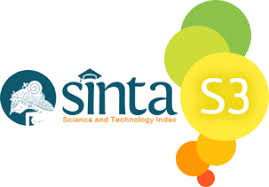Strategi transformasi digital gramedia dalam industri majalah
 Abstract views: 631
,
Abstract views: 631
,
 PDF downloads: 1709
PDF downloads: 1709
Abstract
Abstract
The growth of new media has forced the printed media industry to transform into online media, resulting in a number of consequences in the production process, which have to adapt with the needs of users in the digital era. This encouraged Gramedia of Magazine to carry out digital transformation strategy, to maintain sustainability of the media.
This study utilizes the qualitative approach with the case study research method. Primary data collection in the research is done using interviews, observation, and document study.
Results of the study show that a number of strategies must be carry out both in terms of the content production and resource, to support the transformation process and provide solutions for the sustainability of the media business.
Keywords: Digital transformation; Media sustainability; New media;Media Strategy
References
Derviana, A., & Fitriawan, R. A. (n.d.). KONVERGENSI PADA MEDIA MASSA (Studi Deskriptif Kualitatif Mengenai Konvergensi Media di Republika).
Deuze, M., & Mc.Quail, D. (2020). Mcquail’s Media & Mass Communication Theory.
Dhiya, A., Dan, H., & Fadilah, E. (2018). Transformasi Harian Kompas Menjadi Portal Berita Digita Subscription Kompas.Id. 1(2). http://jurnal.unpad.ac.id/kajian-jurnalisme|190
elestrom, lars. (2014). Media Transformation (1st ed.). https://doi.org/10.1057/9781137474254.0001
Fidler, R. (2003). Mediamorforsis, Memahami Media Baru (1st ed.). Bentang Budaya.
Ha, L., & Webst, J. (2011). Audience Evolution: New Technologies and the Transformation of Media Audiences Related papers Program Value in t he Evolving Television Audience Market place Philip Napoli Measuring Media Use Across Plat forms: Evolving Audience Informat ion Syst ems Ut sav Mamoria Beneat h t he Veneer of Fragment at ion: Television Audience Polarizat ion in a Mult ichannel World.
Hidayat, D. N. (n.d.). Metodologi Penelitian dalam Sebuah “Multi-Paradigm Science.”
Lugmayr, A., Dal, C., & Editors, Z. (n.d.). Media Business and Innovation Media Convergence Handbook-Vol. 1 Journalism, Broadcasting, and Social Media Aspects of Convergence. http://www.springer.com/series/11520
Newman, N., Fletcher, R., Schulz, A., Andı, S., Robertson, C. T., & Kleis Nielsen, R. (n.d.). The Reuters Institute Digital News Report 2021.
Pacey, A. (2000). The Culture of-Technology.
Pandrianto, N. (2018). “Strategi Jaringan” Strategi Bisnis dan Konten Media Industri Media Cetak di Era Digital (Studi Kasus Media Kompas Gramedia). In Aceh Global Conference (Vol. 292). AGC.
Perbawaningsih, Y. (n.d.). Peran Iklim Komunikasi dalam Mencapai Tujuan Organisasional di Universitas Atma Jaya Yogyakarta.
Suciska, W., Eka, &, & Gunawibawa, Y. (n.d.). Pola Konsumsi Berita pada Kelompok Khalayak Digital di Kota Bandar Lampung.
Sudibyo, A. (2022). Dialektika Digital (1st ed.). Kepustakaan Populer Gramedia
Copyright (c) 2023 Jurnal Komunikasi Profesional

This work is licensed under a Creative Commons Attribution-ShareAlike 4.0 International License.

Jurnal Komunikasi Profesional is licensed under a Creative Commons Attribution-ShareAlike 4.0 International License.
1. Proposed Policy for Journals That Offer Open Access
Authors who publish with this journal agree to the following terms:
- Authors retain copyright and grant the journal right of first publication with the work simultaneously licensed under a Creative Commons Attribution License that allows others to share the work with an acknowledgment of the work's authorship and initial publication in this journal.
- Authors are able to enter into separate, additional contractual arrangements for the non-exclusive distribution of the journal's published version of the work (e.g., post it to an institutional repository or publish it in a book), with an acknowledgement of its initial publication in this journal.
- Authors are permitted and encouraged to post their work online (e.g., in institutional repositories or on their website) prior to and during the submission process, as it can lead to productive exchanges, as well as earlier and greater citation of published work (See The Effect of Open Access).
2. Proposed Policy for Journals That Offer Delayed Open Access
Authors who publish with this journal agree to the following terms:
- Authors retain copyright and grant the journal right of first publication, with the work [SPECIFY PERIOD OF TIME] after publication simultaneously licensed under a Creative Commons Attribution License that allows others to share the work with an acknowledgement of the work's authorship and initial publication in this journal.
- Authors are able to enter into separate, additional contractual arrangements for the non-exclusive distribution of the journal's published version of the work (e.g., post it to an institutional repository or publish it in a book), with an acknowledgement of its initial publication in this journal.
- Authors are permitted and encouraged to post their work online (e.g., in institutional repositories or on their website) prior to and during the submission process, as it can lead to productive exchanges, as well as earlier and greater citation of published work (See The Effect of Open Access).



